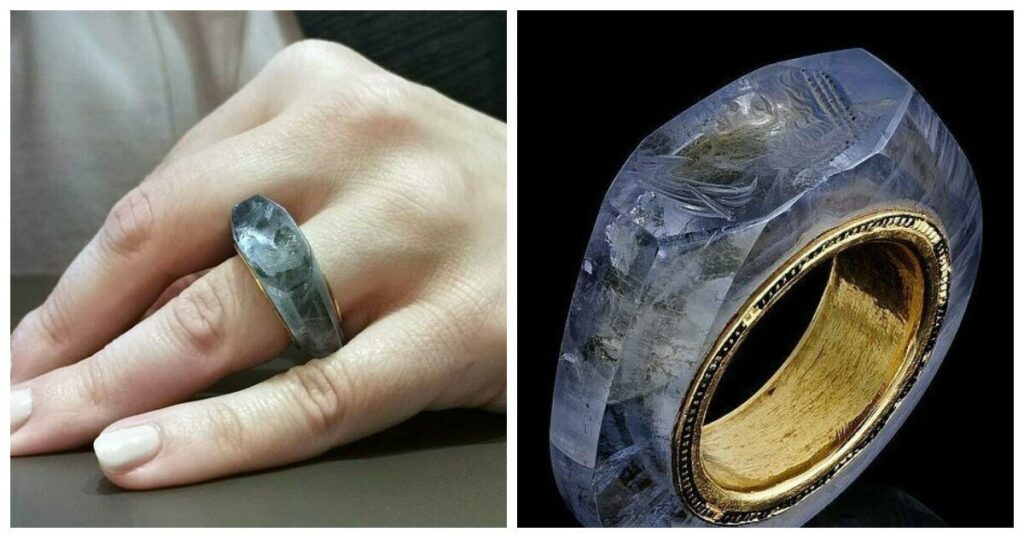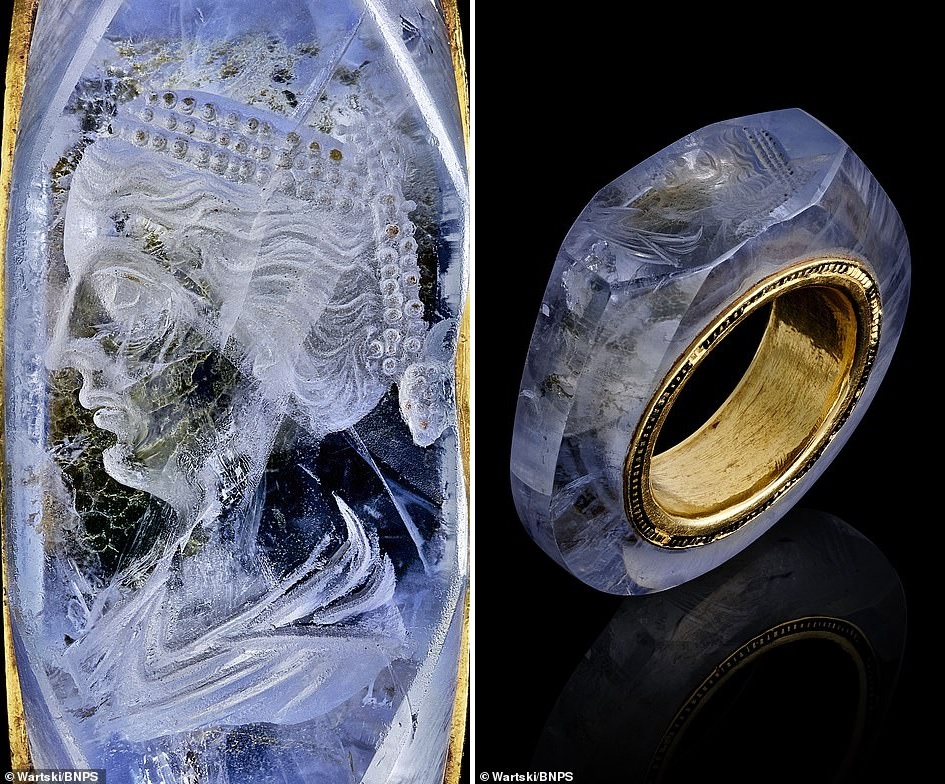Exquisite 2,000-year-old sapphire ring thought to have belonged to Roman Emperor Caligula
The Roman emperor Caligula, who had been governing for four years from AD 37 until his assassination, was said to own an exquisite 2,000-year-old ring of Sapphire.

The sky blue hololith, made from a single piece of the precious stone, is believed to have been owned by Caligula. The face engraved into the bezel is thought to be his fourth and last wife Caesonia, who was said to be so beautiful Caligula paraded her naked in front of his friends.
The reason for Caligula’s assassination could stem from the extravagance of spending, especially on precious stones, which depleted the Roman treasury.
There are even rumors that Caligula also incestuous relationships with sisters in the royal family and adultery with the wives of allies.
Worth mentioning, this ancient sapphire ring has a woman’s face engraved on it. According to the Daily Mail, this woman is Caesonia, Caligula’s fourth wife.
Caesonia possesses the beauty of tilting the water, tilting the city. Emperor Caligula even once naked his wife and march in front of friends for people to admire. However, “beautiful fate”, Caesonia was killed shortly after Emperor Caligula was assassinated.
The sapphire ring is said to have attracted attention during an exhibition of more than 100 gems held by jewelry company Wartski next week in London, England. Its value is about USD 7,000 – USD 750,000.
The auction became a major concern for gem collectors around the world. People from Japan even lined up outside Wartski’s premises days before the exhibition was first approved.

The “Caligula Ring” is in the Earl Marlund Gems “Marlborough Gems” from 1637 to 1762. This is a collection of 800 gems carved by George Spencer, the 4th earl of Marlborough, into the late 18th century, early 19th century.
They were sold in 1875 by John Winston Spencer-Churchill, 7th Earl of Marlborough, to fund the repair of the Blenheim Palace.
“This ring is one of the precious pieces of the” Marlborough Gems “collection. It is made entirely of sapphire. Very few of these rings still exist and I bet this is the best one of you. find.
We believe it belongs to Emperor Caligula and the face that appears on the ring is his fourth wife, Caesonia, “said Kieran McCarthy, director of Wartski.





